#arthur whitten-brown
Text
The first non-stop transatlantic air crossing happened in what year?

On 15th June 1919, Captain John Alcock and Lieutenant Arthur Whitten Brown became the first people to fly non-stop across the Atlantic Ocean from St John’s, Newfoundland, to Clifden in Ireland. The distance of 1,890 miles (3,042 km) was completed in a twin-engined biplane and took more than 16 hours. The two men completed the challenge in response to the 'Daily Mail' competition to "cross the Atlantic in an aeroplane in flight from any point in the United States of America, Canada or Newfoundland to any point in Great Britain or Ireland in 72 continuous hours." The £10,000 prize money was awarded to Alcock and Brown by the Secretary of State for Air, Winston Churchill.
Captain Sir John William Alcock (1892-1919) was a British Royal Navy and Royal Airforce officer, who served as a pilot during the First World War. He was working as a test pilot for Vickers when the competition was announced. Lieutenant-Colonel Sir Arthur Whitten Brown (1889-1948) also served as a pilot during the war. While looking for work, he approached Vickers who offered him the chance to be Alcock's navigator.
The two men were treated as heroes after their success. A week after landing in Ireland, Alcock and Brown were awarded the honour of Knight Commander of the Most Excellent Order of the British Empire (KBE) by King George V. Sadly, Alcock died a few months later after crashlanding his plane in France. Brown committed suicide following the death of his son during World War II.
0 notes
Text
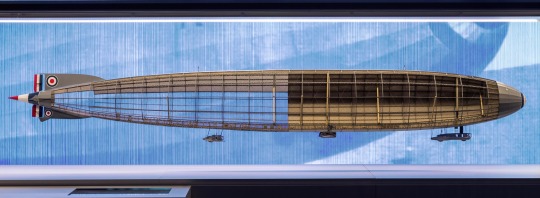
Henry Wydler, Kriens
Model: Transatlantic Airship R 34 from 1919
Aviation technology developed rapidly in the First World War. As a result, Atlantic flights had realistic prospects of success for the first time in 1919. The first non-stop flight was made by an airplane. The British John Alcock and Arthur Whitten Brown flew on the 14th /15. June 1919 in a twin-engine Vickers Vimy from Newfoundland to Ireland. From 2nd to 6th In July 1919, the British airship R 34 managed the route from Scotland to the USA. 5,765 km were covered in 108 hours. For the first time, the Atlantic was conquered in the meteorologically more difficult east-west direction. Towards the end of the trip, the crew struggled with engine problems and bad weather. On landing, only fuel was on board for 40 minutes. The return journey took place from the 10th to the 13th. July in 75 hours. In addition to the great flying performance, a blind passenger and the on-board cat Wopsie also made headlines. The initiators of the trip saw the company as the first step towards intercontinental passenger traffic with British airships. The cutting model of R 34 is completely covered on one side, the other side is open to viewers and allows insight into the complex skeleton structure and the inner workings. The Swiss model maker Henry Wydler is responsible for this elaborately built model. The R 34 is a real "eye-catcher" in the permanent exhibition of the Zeppelin Museum.
Zeppelin Museum
4 notes
·
View notes
Text
Alcock and Brown
This date in 1892 saw the birth of Sir John Alcock, who, with Sir Arthur Whitten-Brown, made the first non-stop flight across the Atlantic in 1919. Here are some facts about him and his flight:
0 notes
Text
Events 6.14
1158 – The city of Munich is founded by Henry the Lion on the banks of the river Isar.
1216 – First Barons' War: Prince Louis of France takes the city of Winchester, abandoned by John, King of England, and soon conquers over half of the kingdom.
1276 – While taking exile in Fuzhou, away from the advancing Mongol invaders, the remnants of the Song dynasty court hold the coronation ceremony for Emperor Duanzong.
1285 – Second Mongol invasion of Vietnam: Forces led by Prince Trần Quang Khải of the Trần dynasty destroy most of the invading Mongol naval fleet in a battle at Chuong Duong.
1287 – Kublai Khan defeats the force of Nayan and other traditionalist Borjigin princes in East Mongolia and Manchuria.
1381 – Richard II of England meets leaders of Peasants' Revolt at Mile End. The Tower of London is stormed by rebels who enter without resistance.
1404 – Welsh rebel leader Owain Glyndŵr, having declared himself Prince of Wales, allies himself with the French against King Henry IV of England.
1618 – Joris Veseler prints the first Dutch newspaper Courante uyt Italien, Duytslandt, &c. in Amsterdam (approximate date).
1645 – English Civil War: Battle of Naseby: Twelve thousand Royalist forces are beaten by fifteen thousand Parliamentarian soldiers.
1658 – Franco-Spanish War: Turenne and the French army win a decisive victory over the Spanish at the battle of the Dunes.
1690 – King William III of England (William of Orange) lands in Ireland to confront the former King James II.
1775 – American Revolutionary War: the Continental Army is established by the Continental Congress, marking the birth of the United States Armed Forces.
1777 – The Second Continental Congress passes the Flag Act of 1777 adopting the Stars and Stripes as the Flag of the United States.
1789 – Mutiny on the Bounty: HMS Bounty mutiny survivors including Captain William Bligh and 18 others reach Timor after a nearly 7,400 km (4,600 mi) journey in an open boat.
1800 – The French Army of First Consul Napoleon Bonaparte defeats the Austrians at the Battle of Marengo in Northern Italy and re-conquers Italy.
1807 – Emperor Napoleon's French Grande Armée defeats the Russian Army at the Battle of Friedland in Poland (modern Russian Kaliningrad Oblast) ending the War of the Fourth Coalition.
1821 – Badi VII, king of Sennar, surrenders his throne and realm to Ismail Pasha, general of the Ottoman Empire, bringing the 300 year old Sudanese kingdom to an end.
1822 – Charles Babbage proposes a difference engine in a paper to the Royal Astronomical Society.
1830 – Beginning of the French colonization of Algeria: Thirty-four thousand French soldiers begin their invasion of Algiers, landing 27 kilometers west at Sidi Fredj.
1839 – Henley Royal Regatta: the village of Henley-on-Thames, on the River Thames in Oxfordshire, stages its first regatta.
1846 – Bear Flag Revolt begins: Anglo settlers in Sonoma, California, start a rebellion against Mexico and proclaim the California Republic.
1863 – American Civil War: Second Battle of Winchester: A Union garrison is defeated by the Army of Northern Virginia in the Shenandoah Valley town of Winchester, Virginia.
1863 – Second Assault on the Confederate works at the Siege of Port Hudson during the American Civil War.
1872 – Trade unions are legalized in Canada.
1888 – The White Rajahs territories become the British protectorate of Sarawak.
1900 – Hawaii becomes a United States territory.
1900 – The second German Naval Law calls for the Imperial German Navy to be doubled in size, resulting in an Anglo-German naval arms race.
1907 – The National Association for Women's Suffrage succeeds in getting Norwegian women the right to vote in parliamentary elections.
1919 – John Alcock and Arthur Whitten Brown depart from St. John's, Newfoundland on the first nonstop transatlantic flight.
1926 – Brazil leaves the League of Nations.
1937 – Pennsylvania becomes the first (and only) state of the United States to celebrate Flag Day officially as a state holiday.
1937 – U.S. House of Representatives passes the Marihuana Tax Act.
1940 – World War II: The German occupation of Paris begins.
1940 – The Soviet Union presents an ultimatum to Lithuania resulting in Lithuanian loss of independence.
1940 – Seven hundred and twenty-eight Polish political prisoners from Tarnów become the first inmates of the Auschwitz concentration camp.
1941 – June deportation: the first major wave of Soviet mass deportations and murder of Estonians, Latvians and Lithuanians, begins.
1944 – World War II: After several failed attempts, the British Army abandons Operation Perch, its plan to capture the German-occupied town of Caen.
1945 – World War II: Filipino troops of the Philippine Commonwealth Army liberate the captured in Ilocos Sur and start the Battle of Bessang Pass in Northern Luzon.
1949 – Albert II, a rhesus monkey, rides a V-2 rocket to an altitude of 134 km (83 mi), thereby becoming the first mammal and first monkey in space.
1950 – An Air France Douglas DC-4 crashes near Bahrain International Airport, killing 40 people. This came two days after another Air France DC-4 crashed in the same location.
1951 – UNIVAC I is dedicated by the U.S. Census Bureau.
1954 – U.S. President Dwight D. Eisenhower signs a bill into law that places the words "under God" into the United States Pledge of Allegiance.
1955 – Chile becomes a signatory to the Buenos Aires copyright treaty.
1959 – Disneyland Monorail System, the first daily operating monorail system in the Western Hemisphere, opens to the public in Anaheim, California.
1959 – Dominican exiles depart from Cuba and land in the Dominican Republic to overthrow the totalitarian government of Rafael Trujillo. All but four are killed or executed.
1962 – The European Space Research Organisation is established in Paris – later becoming the European Space Agency.
1966 – The Vatican announces the abolition of the Index Librorum Prohibitorum ("index of prohibited books"), which was originally instituted in 1557.
1967 – Mariner program: Mariner 5 is launched towards Venus.
1972 – Japan Airlines Flight 471 crashes on approach to Palam International Airport (now Indira Gandhi International Airport) in New Delhi, India, killing 82 of the 87 people on board and four more people on the ground.
1982 – Falklands War: Argentine forces in the capital Stanley conditionally surrender to British forces.
1985 – Five members of the European Economic Community sign the Schengen Agreement establishing a free travel zone with no border controls.
1986 – The Mindbender derails and kills three riders at the Fantasyland (known today as Galaxyland) indoor amusement park at West Edmonton Mall in Edmonton, Alberta.
1994 – The 1994 Vancouver Stanley Cup riot occurs after the New York Rangers defeat the Vancouver Canucks to win the Stanley Cup, causing an estimated C$1.1 million, leading to 200 arrests and injuries.
2002 – Near-Earth asteroid 2002 MN misses the Earth by 75,000 miles (121,000 km), about one-third of the distance between the Earth and the Moon.
2014 – A Ukraine military Ilyushin Il-76 airlifter is shot down, killing all 49 people on board.
2017 – A fire in a high-rise apartment building in North Kensington, London, UK, leaves 72 people dead and another 74 injured.
2017 – US Republican House Majority Whip Steve Scalise of Louisiana, and three others, are shot and wounded by a terrorist while practicing for the annual Congressional Baseball Game.
0 notes
Text

Epic Flights No. 3 - First Across The Atlantic. A back page feature from Hotspur in 1980 (but may be a reprint). DC Thomson.
#dc thomson#hotspur#epic flights#terry patrick#1980#john alcock#arthur whitten-brown#vickers vimy#1919#15nov#14jun
5 notes
·
View notes
Video
Vickers Vimy IV [BAPC-51] by Alan Wilson
Via Flickr:
Built 1918 This is the aircraft in which John Alcock and Arthur Whitten Brown made the first non-stop crossing of the Atlantic in June 1919. The Vimy had been designed in 1917 as a bomber, but when the First World War ended this example was converted with extra fuel tanks to attempt the crossing. The pair left Newfoundland on 15 June and landed at Clifden in Connemara, Ireland some 16 hours later to become national heroes. It joined the Science Museum in 1919 and is remains on display in the ‘Flight’ Hall. Science Museum, South Kensington, London. 16-6-2015
6 notes
·
View notes
Photo
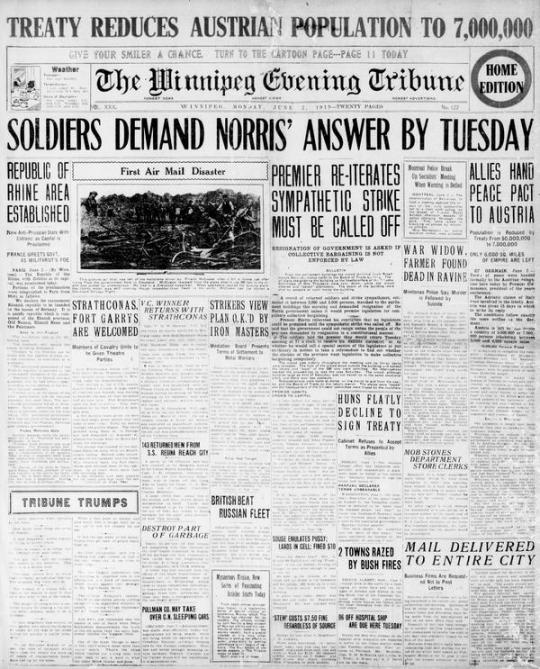

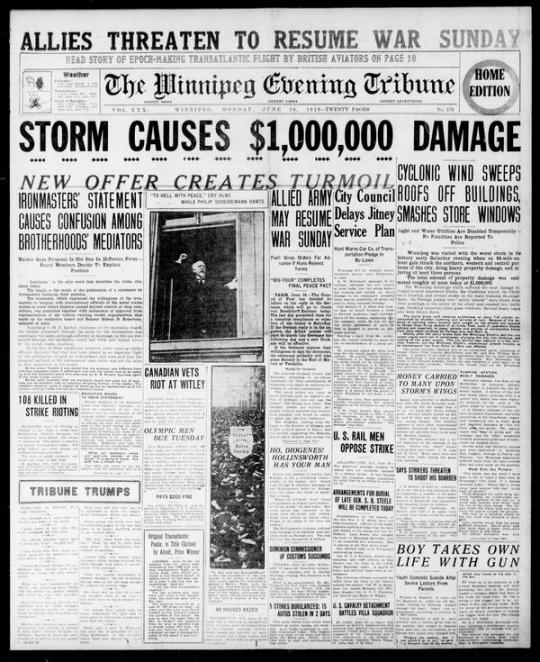
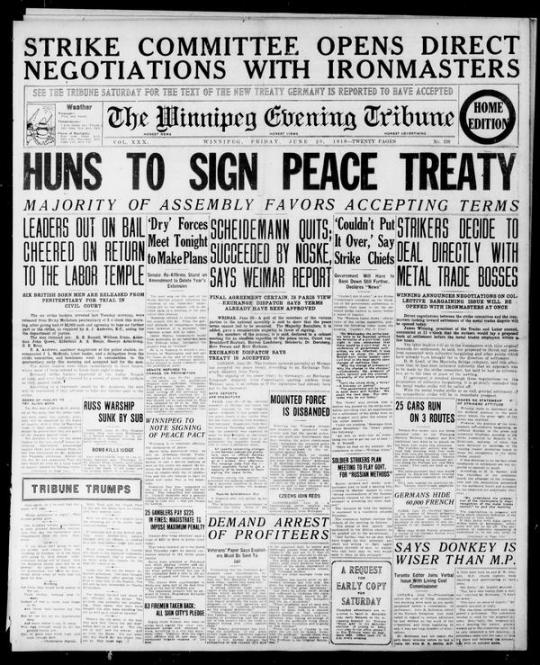

This Month in Headlines - June 1919
While Manitoba’s newspapers were still focused on the events of the Winnipeg General Strike, two other pieces of significant world news garnered repeated front-page coverage this month: the first non-stop transatlantic flight, and the signing of the Treaty of Versailles to formally end the First World War.
2 June 1919 - The Allies’ peace terms for Austria were formally presented, following the similar strict outline set for Germany, and separating out many independent countries formerly under the Austrian governance.
14 June 1919 - John “Jack” Alcock and Arthur Whitten Brown took off in a Vickers Vimy aircraft from Newfoundland to instigate the first non-stop transatlantic flight.
16 June 1919 - Alcock and Brown reach Ireland after a 16-hour flight. Allied Armies threaten to march into Germany if WWI peace treaty is not agreed to within six days.
20 June 1919 - Reports emerge that the Germany National Assembly had accepted the peace terms and would sign the peace treaty stipulated by the allies.
28 June 1919 - 5 years to the day after the assassination of Archduke Franz Ferdinand, the Treaty of Versailles is signed to formally end the Great War. General Smuts of South Africa signed under protest, while China refused to have its delegates sign as they were not allowed to voice reservations.
#newspapers#first world war#winnipeg tribune#Treaty of Versailles#transatlantic flight#alcock and brown#world history#wwi#aeronautics
8 notes
·
View notes
Text
Cicely Tyson on the ‘Power’ of Her 1973 Oscar Nom: ‘That Was My Dream’

The day I learned I’d been nominated for an Oscar, I was filming a small role for a new Black director. Just as I was delivering an important line, I heard laughter on the sidelines of the set. “Don’t they know we’re shooting in here?” I snapped. “What’s the matter with them?” A moment later, a producer walked in. “We’ve just gotten some good news,” he said. I held up my hand. “I don’t want to hear anything,” I told him. “Whatever it is can wait.” When I am working, I show up to do exactly that. All else is a distraction, a disruption to an unfolding moment. The gentleman smiled, shook his head, and left.
The director, who must’ve heard the news that awaited, gave me a strange look before we resumed. We completed the scene, and even on my way out, I wouldn’t let anyone tell me anything. It was upon arriving home, at my agent Haber’s place, that he gave me the exhilarating announcement: I’d been nominated for an Academy Award for Best Actress. “Really?” I said, the living room suddenly swirling out of focus. “Yes!” he yelped. As tears flooded my face, all I could think about were my friend Arthur Mitchell’s words to me: “You’re going to be nominated for an Oscar.” My friend’s what-if had come true.
I don’t care what any actor says, that golden statue matters. It is what we’re all vying for—the ultimate validation from our peers. You empty yourself into a character, you labor hour upon hour to get every single gesture and sentence precise, and you mean to tell me that such an affirmation means nothing to you? It holds tremendous power. When I was just getting into the business, I’d looked on in awe as Sidney Poitier earned that affirmation for his marvelous work in Lilies of the Field, becoming the first Black man to win an Academy Award for Best Actor. That evening, as I watched the ceremony on my old black-and-white RCA set, I said to myself, I’m going to sit in the front at the Oscars one day. That was my dream. But as my career carried me mostly toward stage and television, that hope seemed unlikely. That is why, long before I did Sounder, I’d quietly accepted that the Academy Awards would probably not be part of my path. And yet, lo and behold, here I was, on the verge of taking a seat in that front row I’d envisioned for myself.
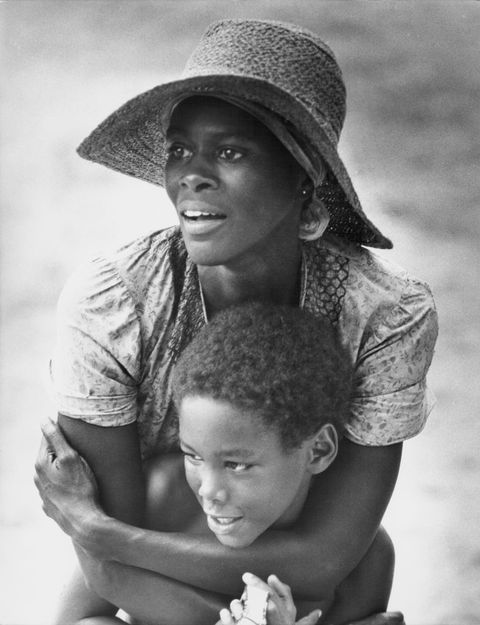
Cicely Tyson as Rebecca in Sounder.
Stanley Bielecki Movie CollectionGetty Images
My good news was just the beginning. Sounder received a slew of nominations, for Best Picture, Best Writing (Lonne Elder), and Best Actor (I was as delighted for Paul Winfield as I was for myself). The film’s message also reverberated beyond our shores, earning a BAFTA nomination for its score, created by Taj Mahal, who also earned a Grammy for his work. Kevin Hooks, who played my son (and who, in real life, is the son of director and actor Robert Hooks), received a Golden Globe nomination. That awards season also became a landmark recognition of Black talent: Diana Ross was nominated for an Oscar for her role in Lady Sings the Blues, as was screenplay writer Suzanne de Passe. The 1973 nominations for Diana Ross and myself were the first time Black women had been nominated in the Best Actress category since trailblazer Dorothy Dandridge received the honor in 1954 for her role in Carmen Jones.
The morning after the official nomination announcement in Los Angeles, I called my mother in New York. On television, she’d seen how all those white folks had stood and applauded me. “Well?” I said to her. “Well, what?” she said chuckling. “You’d better tell me something,” I said. The line went silent. “I am so proud of you, Sister,” she finally said. I could feel tears brimming and I let them fall, unable to speak because I was so overcome by what I’d longed to hear. If I had not heard those words from my mother, none of this would have made any difference. If she had not been able to participate in the acclaim I was receiving, all of it would’ve felt empty to me.
I, of course, already knew she and my father recognized my work. “Why do you do such sad movies?” my dad once joked after he’d seen me in Brown Girl, Brownstones. Likewise, Mom would often tell me what her friends were always asking her: “Why is she always wearing rags in her movies? Doesn’t she ever dress up?” Though their teasing was an indirect acknowledgment of their pride, I needed my mother, in particular, to voice her validation. She’d been my greatest source of energy, the reason I’d devoted myself so wholly to my work. She had believed I’d go out and become a slut of some kind, had no idea this Hollywood journey could lead me to play a character as honorable as Rebecca. My nomination did more than just prove my mother wrong. After a childhood during which my mother’s opinions drowned out all others, it gave me the last say.
“If I had not heard those words from my mother, none of this would have made any difference.”
I flew my mother to Los Angeles to attend the screening of Sounder. We were seated in the mezzanine, and she was one row behind me. In the dark, just as the curtains parted, she tapped me on the shoulder. “Ed Sullivan is sitting behind me,” she said, pronouncing his last name Sulli-wan, because for whatever reason, West Indians can’t say v’s. For years, she’d never missed The Ed Sullivan Show on Sunday nights. I turned around and whispered to her, “And I am sitting here.” We both snickered, her loudly enough to prompt Ed Sulli-wan to smile in my mother’s direction.
To celebrate Sounder’s cascade of nominations, the studio hosted a splashy New York premiere. I called upon acclaimed fashion designer Bill Whitten to design my dress (years later, Bill would design Michael Jackson’s rhinestone glove to cover the singer’s early signs of vitiligo). “I want to create the kind of gown that Rebecca might have worn if she’d had money,” I told Bill. That sent him in search of the prints and cottons poor colored women would’ve worn in 1933. Using the fabric remnants he found, he pieced together a treasure. The dress, antebellum in style, came with a fancy apron that served as a flower sack. He filled it with cotton balls he’d sent for from down South. It was the most glorious creation. The same woman who braided my hair for the movie created a crown of beautiful cornrows to complement my look. When I strode into the theater that evening, chin lifted, pride on my brow, I showed up in the name of the ancestors whose sweat and sorrow had carried me there.
In the months leading up to the ceremony, the devil got to work doing what he does best: attempting to pit Black women against each other. In the lead-up to the Oscars, one of Diana Ross’s designers tried to keep my dress from being finished by hiring my designer to make suits for the Jackson Five. I don’t know whether Diana knew anything about it, but I heard the whispers. The media, for months, had been playing up the narrative that there was some big competition between the two of us. I refused to feed into that storyline, which was false. I have never been in competition with anybody but myself, and I wanted no part in such unpleasantness. Just Breathing While Black is trouble enough.
A month before the ceremony, the studio sent me overseas on a promotional tour in Europe, my first time in Paris and London. Months before I left town, I’d rubbed elbows with British royalty. Antony Charles Robert Armstrong-Jones, First Earl of Snowdon, was then husband to Princess Margaret and an avid photographer and filmmaker. Lord Snowdon had taken quite an interest in Arthur’s work at Dance Theatre of Harlem. The two began a partnership, with Lord Snowdon investing in the school. Arthur connected me with him, and during one of Lord Snowdon’s trips to New York, he and I met for appetizers and a brief conversation. As we awaited our order, he kept glancing over his left shoulder. How strange, I thought. I wonder if he’s expecting someone. As it turned out, he was on the lookout for the paparazzi, who of course had followed him to the restaurant. Later, on another one of his trips to New York, Lord Snowdon photographed me wearing that Bill Whitten masterpiece of a dress. What a memory.

Cicely Tyson at England’s Heathrow Airport in February 1973, a month before the Oscars.
George StroudGetty Images
In London, the marveling began with my ride from Heathrow in an enormous black taxi, a Hackney carriage so gargantuan that I could stand up inside of it! In a penthouse suite in the Dorchester Hotel, I spent a half-hour just wandering around the space, gawking at the grandeur of the accommodations, thinking back on those days when my siblings, Emily and Melrose, and I had all been squished together on a rollaway bed in our parents’ living room.
And to think that I now had this sprawling space to myself, in a world where my name was plastered on billboards all over America and Europe. It was nothing short of spectacular. The same was true of my time in the City of Light, where, from my balcony, I gazed in awe at the Eiffel Tower, head held high and preening in the distance.
“When I strode into the theater that evening, chin lifted, pride on my brow, I showed up in the name of the ancestors whose sweat and sorrow had carried me there.”
Back in New York before the ceremony, the surrealism continued. In another head nod to Rebecca, I wanted my hair done in a croquignole, the deep-wave style that would’ve been popular for well-to- do women during the 1930s. “Do you know how to do that style?” I asked my hairstylist Omar. “No,” she said, “but my mother can.” Can you believe that child’s mom came out of retirement just to create my waves? The words thank you fell short of expressing the gratitude I felt. Designer Bill Whitten turned up the luxury by creating a white silk-wool fitted dress, with a touch of grey in it, complete with a heart cut-out, lace-trimmed detail across the décolletage. Gracing each sleeve was a glistening row of tiny gold buttons, with the same buttons stretching down the back. It was absolutely stunning.
When Arthur arrived, dashing in his tuxedo, he escorted me by the arm to the awaiting limo. The evening, for us, marked two celebrations: the Forty-Fifth Academy Awards, and my dear Arthur’s thirty-ninth birthday. The quintet of hosts—Carol Burnett, Michael Caine, Charlton Heston, and Rock Hudson—took the stage at the Dorothy Chandler Pavilion. My dream was to be in the front row, and there I sat, delighted that my fantasy had come to pass.

But as for the possibility of garnering the gold statue, I had done my back-of-the-napkin math. I’m logical that way, a pragmatist who is always weighing the odds, and in Hollywood politics, those odds were decidedly not in my favor. That same year, Liza Minnelli had been nominated for her role in Cabaret. Her father, Vincente, was a big-time director, which gave her one advantage. Check. Her mother was Judy Garland. Double check. Neither of them had ever earned an Oscar. Triple check. And at the time, Liza was dating Desi Arnaz Jr., son of Desi and Lucille Ball, Hollywood royalty. Quadruple check. Common sense told me that I had no chance amid the schmoozing and vote-securing that goes on in back rooms.
So as I sat near the stage that evening, I relaxed into the joy of just being there, with Arthur to my left and with Rebecca’s spirit dancing on my shoulder. So certain was I that this was Liza’s year, when Gene Hackman said, “And the winner is…,” I turned to Arthur and said, “Liza Minnelli.” Liza made her way up to the stage, tearful and jubilant, and I sat there, palm over my heart, relishing my presence in the arena. This journey of mine, this path so unpredictable, had somehow carried me from 219 East 102nd Street in the slums to the front row of movie magic at Hollywood’s most grand affair. As Liza accepted her award, I’d already received the only prize I have ever truly wanted—the affirmation of the dear woman who gave me birth.
From the book Just as I Am: A Memoir by Cicely Tyson with Michelle Burford. Copyright © 2021 by Cicely Tyson. Reprinted by permission of HarperCollins Publishers.
Cicely Tyson
Cicely Tyson has been nominated for 40 television and film awards and has won 42, most notably an Oscar, a Tony Award, 3 Emmys, 8 NAACP Image Awards, the African American Film Critics Special Achievement Award, the BAFTA Film Award, the Black Film Critics Circle Award, 4 Black Reel Awards, the Elle Women in Hollywood Award, 3 Lifetime Achievement Awards, and many more. Ms.
This content is created and maintained by a third party, and imported onto this page to help users provide their email addresses. You may be able to find more information about this and similar content at piano.io
Cicely Tyson on the ‘Power’ of Her 1973 Oscar Nom: ‘That Was My Dream’
0 notes
Photo

'El gabinete negro'. El grupo de afroamericanos de élite que sirvieron como asesores de políticas públicas del presidente Franklin D. Roosevelt y la Primera Dama de 1933 a 1945. Fotografiado el 15 de marzo de 1938 por Addison N. Scurlock.
PRIMERA FILA, DE IZQUIERDA A DERECHA: Dr. Ambrose Caliver, Dr. Roscoe C. Brown, Dr. Robert C. Weaver, Joseph H. Evans, Dr. Frank Horne, Mary McLeod Bethune, Teniente Lawrence A. Oxley, Dr. William J. Thompkins, Charles E. Hall, William I. Houston, Ralph E. Mizelle.
FILA POSTERIOR, DE IZQUIERDA A Dcha: Dewey R. Jones, Edgar Brown, J. Parker Prescott, Edward H. Lawson, Jr., Arthur Weisiger, Alfred Edgar Smith, Henry A. Hunt, John W. Whitten, Joseph R.
0 notes
Text
Burberry

Burberry là một hãng thời trang sang trọng của Anh, phân phối quần áo thể thao độc đáo sang trọng, phụ kiện thời trang, nước hoa, kính mát và mỹ phẩm. Họa tiết hình sọc vuông đặc trưng của hãng thời trang này đã trở thành một trong những thương hiệu sao chép rộng rãi nhất.
Thương hiệu Burberry nổi tiếng nhất với những chiếc áo khoác, được thiết kế bởi người sáng lập Thomas Burberry.

Thomas Burberry thành lập thương hiệu tại Basingstoke của nước Anh vào năm 1856 ở tuổi 21. Những thiết kế của ông đầu tiên phục vụ cho các binh sĩ trong khu vực.
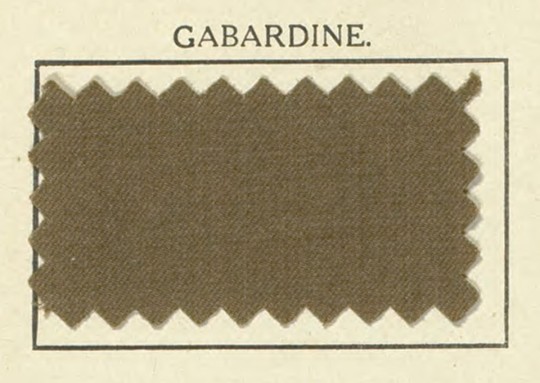
Vào năm 1879 ông phát minh ra loại vải gabardine, một loại vải thoáng khí chịu được thời tiết và cứng rất thích hợp với trang phục ngoài trời. Và đến năm 1888 ông được cấp bằng sáng chế cho phát minh này. Năm 1891 ông chuyển đến London và mở cửa hàng đầu tiên tại số 30 Haymarket.
Năm 1901 logo Hiệp sĩ cưỡi ngựa xuất hiện lần đầu tiên kèm theo chữ Latin ‘Prorsum‘ có nghĩa là ‘Chuyển tiếp’, sau đó đăng ký nó như một nhãn hiệu vào năm 1909 và được dùng cho đến ngày nay.
Năm 1910 phi công nổi tiếng Claude Grahame-White mặc áo gabardine Burberry là người đầu tiên bay giữa London và Manchester trong vòng chưa đầy 24 giờ. Năm 1911 nhà thám hiểm người Na Uy Roald Amundsen và nhóm của ông đã trở thành những người đầu tiên đến Nam Cực với một chiếc lều và quần áo gabardine Burberry. Năm 1912 thuyền trưởng thám hiểm người Anh Robert Falcon Scott đến Nam Cực mặc quần áo Burberry và được trang bị lều Burberry. Áo choàng Tielocken được cấp bằng sáng chế, tiền thân của chiếc áo choàng mà các sĩ quan đã mặc trong thế chiến thứ nhất. Năm 1913 Burberry chuyển đến một cơ sở lớn hơn ở Luân Đôn tại Haymarket, được thiết kế bởi Kiến trúc sư Walter Cave. Từ năm 1914-1918 nhà thám hiểm người Anh Sir Ernest Shackleton mặc Burberry gabardine cho chuyến thám hiểm đến Nam Cực. Trong Thế chiến thứ nhất, Burberry đã cung cấp trang phục và thiết bị cho quân đội. Năm 1919 vua George V chính thức lựa chọn Burberry là thợ may như một chứng nhận của hoàng gia. Cơ trưởng John Alcock và Trung úy Arthur Whitten Brown mặc bộ đồ phi công Burberry để điều khiển máy bay của họ trong buồng lái hở và hoàn thành chuyến bay xuyên Đại Tây Dương đầu tiên trong 72 giờ. Năm 1920 Burberry lần đầu tiên trở thành một công ty được định giá công khai. Năm 1937 Burberry đã tài trợ cho chuyến bay phá kỷ lục từ Croydon tới Cape Town trong chiếc máy bay có tên ‘The Burberry‘. Cả hai phi công bay Sĩ quan Arthur Clouston và Betty Kirby-Green đều mặc Burberry.

Burberry Check đã được đăng ký làm nhãn hiệu và được giới thiệu như một lớp lót cho áo mưa.

Trong Chiến tranh thế giới thứ hai, Burberry đã cung cấp cho Quân đội Anh một loạt trang phục và phụ kiện quân sự, bao gồm cả áo choàng. Burberry cũng phục vụ cho nhiều bộ phận khác của Lực lượng Vũ trang Anh như Không quân Hoàng gia (RAF), Hải quân Hoàng gia, Quân đoàn Tiên phong Hoàng gia, Đơn vị Huấn luyện Cán bộ (OCTU) và Dịch vụ Lãnh thổ phụ trợ (ATS) – bao gồm các đơn vị của phụ nữ. Bất chấp các điều kiện khắc khổ do chiến tranh gây ra, Burberry vẫn tiếp tục sản xuất quần áo dân sự trong những năm 1940 bao gồm cả bộ đồ chịu được mưa gió, áo khoác ngoài và trang phục cho cả nam và nữ. Thương hiệu đã điều chỉnh danh mục sản phẩm theo thời gian chiến tranh để bao gồm những trang phục nữ có còi báo động, được thiết kế để mặc trong các cuộc không kích.
Burberry là một công ty độc lập do gia đình kiểm soát cho đến năm 1955 được mua lại bởi tập đoàn bán lẻ Great Universal Stores (GUS) của Anh. Năm 1964 Burberry là nhà cung cấp áo khoác ngoài chính thức cho đội tuyển Olympic nữ Anh quốc tham gia Thế vận hội Tokyo.
Các ngôi sao của thế giới hiện đại bắt đầu mặc thương hiệu Burberrys. Trong những năm 1970 và 1980, Burberry đã ký thỏa thuận với các nhà sản xuất trên toàn thế giới để sản xuất các sản phẩm bổ sung cho bộ sưu tập hiện có của Anh như bộ quần áo, quần tây, áo sơ mi, đồ thể thao, phụ kiện, cho nam, nữ và trẻ em. Những sản phẩm này, được thiết kế dưới sự kiểm soát chặt chẽ của trụ sở tại London, được sản xuất và phân phối thông qua các cửa hàng bán lẻ độc lập trên toàn thế giới cũng như các cửa hàng Burberry, và góp phần vào sự tăng trưởng của thương hiệu về doanh số và lợi nhuận cho đến cuối thập niên 90.
Tháng 5 năm 2001 Nhà thiết kế sinh ra ở Yorkshire, Christopher Bailey trở thành giám đốc sáng tạo. Năm 2006 CEO Rose Marie Bravo nghỉ hưu và Angela Ahrendts (nguyên là phó chủ tịch cấp cao của Apple) tiếp quản. Trong thời gian đó 2006-2014 doanh số tăng lên hơn 2 tỷ bảng. Bailey và Ahrents đã cùng nhau loại bỏ mẫu séc khỏi tất cả trừ mười phần trăm sản phẩm và lấy lại giấy phép sản phẩm làm đẹp cho nhà mốt. Bailey đã tạo cho thương hiệu một liều thuốc mát lạnh và đưa nó trở lại bản đồ thời trang. Năm 2009 Burberry chuyển trụ sở của mình đến Horseferry House, được thiết kế bởi Gensler trên Phố Regent. Năm 2013 Burberry giới thiệu chương trình “nhìn ngay – mua ngay”, cho phép khách hàng mua đồ từ show diễn trực tiếp qua bộ sưu tập Xuân / Hè 2014 trực tuyến và qua điện thoại di động ngay sau buổi trình diễn. Năm 2014 Bailey trở thành CEO của Burberry và giữ vai trò là giám đốc sáng tạo. Ông chủ của Céline, Marco Gobbetti, đã thay thế Bailey làm CEO vào năm 2016. Bailey tiếp tục làm giám đốc sáng tạo và chủ tịch. Tháng 11 năm 2017 Bailey tuyên bố nghỉ hưu. Tháng 3 năm 2018 Riccardo Tisci được tiết lộ là người thay thế Bailey. Tháng 8 năm 2018 Burberry công bố logo và chữ lồng đơn được thiết kế lấy cảm hứng từ Thomas Burberry mới. Tháng 9 năm 2018 Burberry được thông cáo lệnh cấm đốt tất cả các sản phẩm chưa bán và sử dụng lông thú trong sản xuất. 17 tháng 9 năm 2018 Riccardo Tisci tiết lộ bộ sưu tập đầu tiên của anh cho Burberry.
Đến năm 2014 Burberry đã có trên 500 cửa hàng trên toàn thế giới. Năm 2016 được công nhận là công ty dẫn đầu ngành chỉ số bền vững của Dow Jones trong lĩnh vực ‘Dệt may, may mặc và hàng xa xỉ ‘.
0 notes
Text
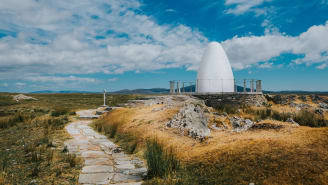
This egg-shaped monument.
Aviation milestone: On June 15, 1919, British pilots John Alcock and Arthur Whitten Brown embarked on the first nonstop transatlantic flight. This unusual egg-shaped structure in Connemara, Ireland, memorializes this momentous achievement.
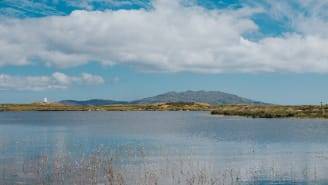
Unexpected landing: The duo left Newfoundland, Canada, and arrived in Connemara, Ireland, 16 hours and 12 minutes later. But their Irish arrival was slightly unexpected -- they crash-landed in Derrigimlagh Bog, pictured here.
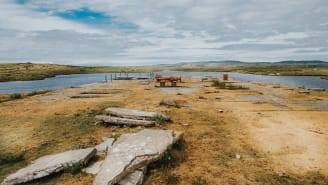
Record breaking: Back in 1919, there was no GPS, no air traffic control. From the sky, Alcock and Brown saw greenery they assumed was a field, but turned out to be the bog. It didn't matter, they'd still reached Europe and claimed the record.
HISTORY
Roughly 2,500 transatlantic flights soar through the skies each day, whisking passengers over the ocean in less than six hours.
On super-smooth Airbus A330s and spacious Boeing 777s, passengers take travel across the Atlantic for granted, and it's easy to forget where it all began.
June 15, 2019, marks 100 years since British aviators John Alcock and Arthur Brown completed the first nonstop transatlantic flight.
A world away from today's smooth runways and supermodern airport, the duo touched down in the picturesque-but-peaty Derrigimlagh Bog, in County Galway in the west of Ireland.
It wasn't 100% intentional; from the sky, the green mud looked like a flat field.
This egg-shaped monument in Ireland is one of the most important aviation sites in the world.Roughly 2,500 transatlantic flights soar through the skies each day, whisking passengers over the ocean in less than six hours.
On super-smooth Airbus A330s and spacious Boeing 777s, passengers take travel across the Atlantic for granted, and it's easy to forget where it all began.
June 15, 2019, marks 100 years since British aviators John Alcock and Arthur Brown completed the first nonstop transatlantic flight.
A world away from today's smooth runways and supermodern airport, the duo touched down in the picturesque-but-peaty Derrigimlagh Bog, in County Galway in the west of Ireland.
It wasn't 100% intentional; from the sky, the green mud looked like a flat field.
Engine delivery: The Rolls Royce engine was delivered to St John's in a horse and cart -- a contrast of old and new.
Alcock and Brown might have semi-crash-landed -- but regardless, the pioneering pilots had completed a monumental feat, paving the way for transcontinental aviation as we know it today.
"It is a massive, massive achievement," says Peter Collins, heritage manager at aerospace manufacturer Rolls-Royce. "The flight in 1919, that's only 16 years after first powered flight."
Today, the duo's landing site doesn't reveal a lot about its aeronautical past. Alcock and Brown's achievement is commemorated by an unusual egg-like memorial, surrounded by grassy hills, sweeping views and plenty of sheep.

Derrigimlagh Bog forms part of Ireland's Wild Atlantic Way, the name given for 2,500 kilometers of coastal roads and walkways along the west of Ireland.
The area is also home to the ruins of the world's first permanent transatlantic radio station, which once employed hundreds of people to transmit news across the water.
As well as the enigmatic egg, there's a more conventional memorial in recognition of Alcock and Brown's flight: an airplane wing that's closer to the road.
The whole area is a stunning spot for an aviation-themed pilgrimage -- just don't expect a museum, there's just the monuments, and a few signs telling the story of Alcock and Brown's achievement.
The British pilots set off from St John's in Newfoundland, Canada, in a Vickers Vimy biplane powered by two Rolls-Royce Eagle engines, made at the Rolls-Royce factory in Derby, England -- where engineers still manufacture airplane parts today.
This production line has its roots in British military requirements during World War I. When the war ended in 1918, there were many Eagle engines still in production, so the manufacturers were keen to prove aviation had a place in peacetime.
The British Daily Mail newspaper ran a competition promising £10,000 to the first pilots who crossed the Atlantic without stopping in less than 72 hours (around $641,000 in today's money).

The British team headed to Newfoundland in June 1919 to give it a shot. Photographs depict the engine being ferried to the departure spot in a horse and cart -- a true past-meets-future moment.
It was a team effort, but once they were up in the air, Alcock and Brown navigated their way across the ocean with no air traffic control and no GPS. Imagine not just the threat of turbulence, but being completely exposed to the elements, and to birds.
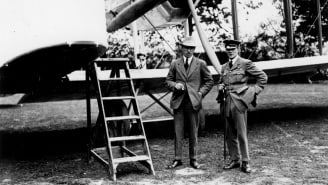
The pilots kept warm via custom-made Burberry heated suits.
The two were awarded £10000 for their efforts
"When they went up on the flight, they were on their own -- trusting the engines and the airframes and that's it," Collins tells CNN Travel. That's part of the reason why they had such an ungraceful landing, he adds.
"When they landed in Ireland, it was their first sight of landfall, because, of course, they use [navigation instruments] like sextants," says Collins.
Alcock and Brown originally planned to travel on to London, but the plane wouldn't budge from the bog. Still, they'd pipped the other teams to the post, successfully completing the first ever, non-stop transatlantic flight.
The duo completed the journey in 16 hours and 12 minutes, grabbing the prize money and sharing it with the Rolls-Royce and Vickers engineers who'd built the aircraft.
For the aircraft manufacturers, it was a marketing, as well as technological, triumph.
"The crossing of the Atlantic by aviation was seen as a real [Marco Polo-style] adventure that could be achieved at that time -- showing that aviation isn't just a 'fly by night' sort of activity. It's here to stay," says Collins.
Still, commercial aviation didn't take off properly right away, says the historian.
"That mindset change doesn't really happen until after the Second World War, in the '20s and '30s. Although there were scheduled flights and aviation is developing and growing, it's not massive [...] It's still for the well-off people," he says.
"Quite often in history, we look for cataclysmic changes," says Collins, but the reality is that a significant event will occur, and "then the aftermath takes a long time to cope with what has happened. And that's why I think that happened with the Alcock and Brown flight."
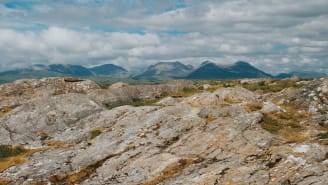
Keith Ewing, a retired university teacher from Minnesota, takes college students on organized trips to the Alcock and Brown monument in Derrigimlagh.
He says seeing the site is pretty incredible.
"You're standing on top of this bog and the bog has been there for truly just thousands of years," he tells CNN Travel.
"And unchanged, really, since Alcock and Brown crash-landed there. It sort of forces that juxtaposition of time and human endeavor and natural endeavors -- and you see it in a different way, you experience it differently."
This egg-shaped monument in Ireland is one of the most important aviation sites in the world
Roughly 2,500 transatlantic flights soar through the skies each day, whisking passengers over the ocean in less than six hours.
On super-smooth Airbus A330s and spacious Boeing 777s, passengers take travel across the Atlantic for granted, and it's easy to forget where it all began.
June 15, 2019, marks 100 years since British aviators John Alcock and Arthur Brown completed the first nonstop transatlantic flight.
A world away from today's smooth runways and supermodern airport, the duo touched down in the picturesque-but-peaty Derrigimlagh Bog, in County Galway in the west of Ireland.
It wasn't 100% intentional; from the sky, the green mud looked like a flat field.
100 years: June 15, 2019 marks the centenary of the first ever none-stop transatlantic flight. British aviators John Alcock and Arthur Whitten Brown took to the skies in Newfoundland and traveled to Ireland.
Alcock and Brown might have semi-crash-landed -- but regardless, the pioneering pilots had completed a monumental feat, paving the way for transcontinental aviation as we know it today.
"It is a massive, massive achievement," says Peter Collins, heritage manager at aerospace manufacturer Rolls-Royce. "The flight in 1919, that's only 16 years after first powered flight."
Today, the duo's landing site doesn't reveal a lot about its aeronautical past. Alcock and Brown's achievement is commemorated by an unusual egg-like memorial, surrounded by grassy hills, sweeping views and plenty of sheep.
Aviation milestone
Pioneering pilots John Alcock and Arthur Brown landed the first non-stop transatlantic flight in Derrigimlagh in the west of Ireland.
Derrigimlagh Bog forms part of Ireland's Wild Atlantic Way, the name given for 2,500 kilometers of coastal roads and walkways along the west of Ireland.
The area is also home to the ruins of the world's first permanent transatlantic radio station, which once employed hundreds of people to transmit news across the water.
As well as the enigmatic egg, there's a more conventional memorial in recognition of Alcock and Brown's flight: an airplane wing that's closer to the road.
The whole area is a stunning spot for an aviation-themed pilgrimage -- just don't expect a museum, there's just the monuments, and a few signs telling the story of Alcock and Brown's achievement.
The British pilots set off from St John's in Newfoundland, Canada, in a Vickers Vimy biplane powered by two Rolls-Royce Eagle engines, made at the Rolls-Royce factory in Derby, England -- where engineers still manufacture airplane parts today.
This production line has its roots in British military requirements during World War I. When the war ended in 1918, there were many Eagle engines still in production, so the manufacturers were keen to prove aviation had a place in peacetime.
The British Daily Mail newspaper ran a competition promising £10,000 to the first pilots who crossed the Atlantic without stopping in less than 72 hours (around $641,000 in today's money)
Alcock and Brown flew a biplane from Canada to Ireland.
Celebrating the 60th anniversary of the first trans-Atlantic jetliner flight
The British team headed to Newfoundland in June 1919 to give it a shot. Photographs depict the engine being ferried to the departure spot in a horse and cart -- a true past-meets-future moment.
It was a team effort, but once they were up in the air, Alcock and Brown navigated their way across the ocean with no air traffic control and no GPS. Imagine not just the threat of turbulence, but being completely exposed to the elements, and to birds.
The Rolls Royce engine was delivered to St John's in a horse and cart.
The pilots kept warm via custom-made Burberry heated suits.
"When they went up on the flight, they were on their own -- trusting the engines and the airframes and that's it," Collins tells CNN Travel. That's part of the reason why they had such an ungraceful landing, he adds.
"When they landed in Ireland, it was their first sight of landfall, because, of course, they use [navigation instruments] like sextants," says Collins..
Alcock and Brown originally planned to travel on to London, but the plane wouldn't budge from the bog. Still, they'd pipped the other teams to the post, successfully completing the first ever, non-stop transatlantic flight.
The duo completed the journey in 16 hours and 12 minutes, grabbing the prize money and sharing it with the Rolls-Royce and Vickers engineers who'd built the aircraft.
For the aircraft manufacturers, it was a marketing, as well as technological, triumph.
"The crossing of the Atlantic by aviation was seen as a real [Marco Polo-style] adventure that could be achieved at that time -- showing that aviation isn't just a 'fly by night' sort of activity. It's here to stay," says Collins.
The two men were awarded a prize of £10,000 for their efforts.
Still, commercial aviation didn't take off properly right away, says the historian.
"That mindset change doesn't really happen until after the Second World War, in the '20s and '30s. Although there were scheduled flights and aviation is developing and growing, it's not massive [...] It's still for the well-off people," he says.
"Quite often in history, we look for cataclysmic changes," says Collins, but the reality is that a significant event will occur, and "then the aftermath takes a long time to cope with what has happened. And that's why I think that happened with the Alcock and Brown flight."
Marking the occasion
The site where they landed remains largely untouched.
Keith Ewing, a retired university teacher from Minnesota, takes college students on organized trips to the Alcock and Brown monument in Derrigimlagh.
He says seeing the site is pretty incredible.
"You're standing on top of this bog and the bog has been there for truly just thousands of years," he tells CNN Travel.
"And unchanged, really, since Alcock and Brown crash-landed there. It sort of forces that juxtaposition of time and human endeavor and natural endeavors -- and you see it in a different way, you experience it differently."
The egg-shaped monument is visible from pretty faraway. There's also a spot where looking through glass panels allows you to glimpse what the biplane actually looked like silhouetted against the landscape, bringing the past into the present.
"That's what I enjoy about it -- and to think of these guys flying at 110 miles an hour across the Atlantic, you think of how cold it was," says Ewing.
He adds that his accompanying students have similar reactions.
"They're sitting there going: 'Whoa, wait a minute. 110 miles an hour? There's no cockpit? How did they do that? Man, they did some crazy things back in those days.'"
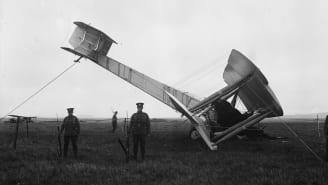
Meanwhile photographer Donal Healy, who visited Derrigimlagh back in summer 2018, stumbled across the site more accidentally.
He was driving in a VW camper van with his girlfriend, on a mission to complete the Wild Atlantic Way.
Immediately, he says, the couple were struck by the atmosphere of this hidden gem and Healy took photographs for his instagram account.

"The site is very unusual, it has an eerie, almost haunted feel," he says.
"I'm from the west of Ireland originally and, for me, Connemara is as Irish as Ireland gets. It was mid-July and the sun was splitting the stones so all the turf was lifted, bone-dry and sat in mounds on either side of the road waiting to be collected."
"It's a whitewashed concrete lump around about the spot where they crashed. There are some photos and a brief history. It's a very quiet spot and there is no visitor center, just an eccentric local man selling tea out of a trailer in the car park."
The flight is commemorated outside of Ireland too. Over in Canada there are three monuments that commemorate the flight's beginnings in Newfoundland. At London's Heathrow Airport, there's a memorial statue of the duo, built in 1954, that's currently in Clifden in Galway for the centenary celebrations.
Clifden is going all out for anniversary -- if you find yourself in this part of Ireland, head along to the Alcock and Brown 100 Festival from June 11 - June 16, 2019.And if you want to see the (rebuilt) aircraft itself, it's located in London's Science Museum.
"Over 100 years, turboprops, piston engines, jet engines, supersonics, flying across the Atlantic -- you know, we've pretty much done it all."
The next step, is perfecting electrification -- and achieving ambitious environmental goals.
Wherever transatlantic flight goes next, it wouldn't be possible without the June 15, 1919 flight.
@boffin-press

0 notes
Text
'They were pioneers': Celebrations mark 100th anniversary of 1st non-stop transatlantic flight
Capt. John Alcock and Lt. Arthur Whitten Brown "literally risked their lives" to cross from Newfoundland to Ireland in 1919.
from CBC | Newfoundland and Labrador News http://bit.ly/2WJdbXH
0 notes
Text
Events 6.14
1158 – The city of Munich is founded by Henry the Lion on the banks of the river Isar.
1216 – First Barons' War: Prince Louis of France takes the city of Winchester, abandoned by John, King of England, and soon conquers over half of the kingdom.
1276 – While taking exile in Fuzhou, away from the advancing Mongol invaders, the remnants of the Song dynasty court hold the coronation ceremony for Emperor Duanzong.
1285 – Second Mongol invasion of Vietnam: Forces led by Prince Trần Quang Khải of the Trần dynasty destroy most of the invading Mongol naval fleet in a battle at Chuong Duong.
1287 – Kublai Khan defeats the force of Nayan and other traditionalist Borjigin princes in East Mongolia and Manchuria.
1381 – Richard II of England meets leaders of Peasants' Revolt at Mile End. The Tower of London is stormed by rebels who enter without resistance.
1404 – Welsh rebel leader Owain Glyndŵr, having declared himself Prince of Wales, allies himself with the French against King Henry IV of England.
1618 – Joris Veseler prints the first Dutch newspaper Courante uyt Italien, Duytslandt, &c. in Amsterdam (approximate date).
1645 – English Civil War: Battle of Naseby: Twelve thousand Royalist forces are beaten by 15,000 Parliamentarian soldiers.
1658 – Franco-Spanish War: Turenne and the French army win a decisive victory over the Spanish at the battle of the Dunes.
1667 – The Raid on the Medway by the Dutch fleet in the Second Anglo-Dutch War ends. It had lasted for five days and resulted in the worst ever defeat of the Royal Navy.
1690 – King William III of England (William of Orange) lands in Ireland to confront the former King James II.
1775 – American Revolutionary War: the Continental Army is established by the Continental Congress, marking the birth of the United States Armed Forces.
1777 – The Second Continental Congress passes the Flag Act of 1777 adopting the Stars and Stripes as the Flag of the United States.
1789 – Mutiny on the Bounty: HMS Bounty mutiny survivors including Captain William Bligh and 18 others reach Timor after a nearly 7,400 km (4,600 mi) journey in an open boat.
1800 – The French Army of First Consul Napoleon Bonaparte defeats the Austrians at the Battle of Marengo in Northern Italy and re-conquers Italy.
1807 – Emperor Napoleon's French Grande Armée defeats the Russian Army at the Battle of Friedland in Poland (modern Russian Kaliningrad Oblast) ending the War of the Fourth Coalition.
1821 – Badi VII, king of Sennar, surrenders his throne and realm to Ismail Pasha, general of the Ottoman Empire, bringing the 300 year old Sudanese kingdom to an end.
1822 – Charles Babbage proposes a difference engine in a paper to the Royal Astronomical Society.
1830 – Beginning of the French colonization of Algeria: Thirty-four thousand French soldiers begin their invasion of Algiers, landing 27 kilometers west at Sidi Fredj.
1839 – Henley Royal Regatta: the village of Henley-on-Thames, on the River Thames in Oxfordshire, stages its first regatta.
1846 – Bear Flag Revolt begins: Anglo settlers in Sonoma, California, start a rebellion against Mexico and proclaim the California Republic.
1863 – American Civil War: Second Battle of Winchester: A Union garrison is defeated by the Army of Northern Virginia in the Shenandoah Valley town of Winchester, Virginia.
1863 – Second Assault on the Confederate works at the Siege of Port Hudson during the American Civil War.
1872 – Trade unions are legalized in Canada.
1888 – The White Rajahs territories become the British protectorate of Sarawak.
1900 – Hawaii becomes a United States territory.
1900 – The second German Naval Law calls for the Imperial German Navy to be doubled in size, resulting in an Anglo-German naval arms race.
1907 – The National Association for Women's Suffrage succeeds in getting Norwegian women the right to vote in parliamentary elections.
1919 – John Alcock and Arthur Whitten Brown depart from St. John's, Newfoundland on the first nonstop transatlantic flight.
1926 – Brazil leaves the League of Nations.
1937 – Pennsylvania becomes the first (and only) state of the United States to celebrate Flag Day officially as a state holiday.
1937 – U.S. House of Representatives passes the Marihuana Tax Act.
1940 – World War II: The German occupation of Paris begins.
1940 – The Soviet Union presents an ultimatum to Lithuania resulting in Lithuanian loss of independence.
1940 – Seven hundred and twenty-eight Polish political prisoners from Tarnów become the first inmates of the Auschwitz concentration camp.
1941 – June deportation: the first major wave of Soviet mass deportations and murder of Estonians, Latvians and Lithuanians, begins.
1944 – World War II: After several failed attempts, the British Army abandons Operation Perch, its plan to capture the German-occupied town of Caen.
1945 – World War II: Filipino troops of the Philippine Commonwealth Army liberate the captured in Ilocos Sur and start the Battle of Bessang Pass in Northern Luzon.
1949 – Albert II, a rhesus monkey, rides a V-2 rocket to an altitude of 134 km (83 mi), thereby becoming the first mammal and first monkey in space.
1951 – UNIVAC I is dedicated by the U.S. Census Bureau.
1954 – U.S. President Dwight D. Eisenhower signs a bill into law that places the words "under God" into the United States Pledge of Allegiance.
1955 – Chile becomes a signatory to the Buenos Aires copyright treaty.
1959 – Disneyland Monorail System, the first daily operating monorail system in the Western Hemisphere, opens to the public in Anaheim, California.
1959 – Dominican exiles depart from Cuba and land in the Dominican Republic to overthrow the totalitarian government of Rafael Trujillo. All but four are killed or executed.
1962 – The European Space Research Organisation is established in Paris – later becoming the European Space Agency.
1966 – The Vatican announces the abolition of the Index Librorum Prohibitorum ("index of prohibited books"), which was originally instituted in 1557.
1967 – Mariner program: Mariner 5 is launched towards Venus.
1972 – Japan Airlines Flight 471 crashes on approach to Palam International Airport (now Indira Gandhi International Airport) in New Delhi, India, killing 82 of the 87 people on board and four more people on the ground.
1982 – Falklands War: Argentine forces in the capital Stanley conditionally surrender to British forces.
1985 – Five members of the European Economic Community sign the Schengen Agreement establishing a free travel zone with no border controls.
1986 – The Mindbender derails and kills three riders at the Fantasyland (known today as Galaxyland) indoor amusement park at West Edmonton Mall in Edmonton, Alberta.
1994 – The 1994 Vancouver Stanley Cup riot occurs after the New York Rangers defeat the Vancouver Canucks to win the Stanley Cup, causing an estimated C$1.1 million, leading to 200 arrests and injuries.
2002 – Near-Earth asteroid 2002 MN misses the Earth by 75,000 miles (121,000 km), about one-third of the distance between the Earth and the Moon.
2014 – A Ukraine military Ilyushin Il-76 airlifter is shot down, killing all 49 people on board.
2017 – A fire in a high-rise apartment building in North Kensington, London, UK, leaves 72 people dead and another 74 injured.
2017 – US Republican House Majority Whip Steve Scalise of Louisiana, and three others, are shot and wounded by a terrorist while practicing for the annual Congressional Baseball Game.
1 note
·
View note
Photo
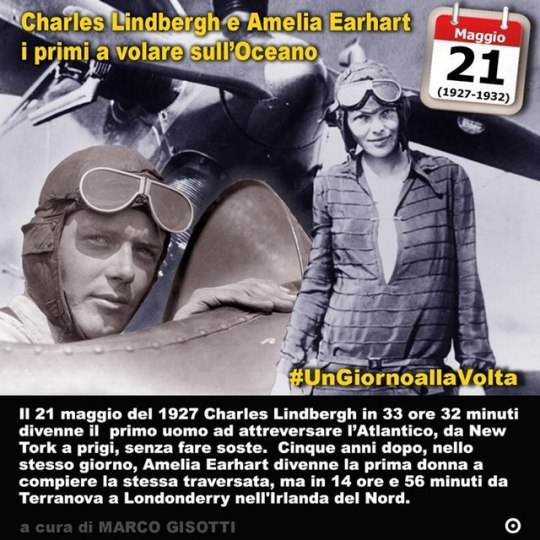
21 maggio 1927: Charles Lindbergh è il primo uomo ad attraversare l’Oceano in volo. 5 anni dopo lo stesso giorno Amelia Earhart sarà la prima donna a farlo Immaginate un mondo più grande di quello nel quale viviamo, nel quale gli Oceani siano ancora distese troppo grandi per un solo uomo. O donna. R immaginate un mondo dove volare non sia così scontato. E gli aerei siano ancora macchine volanti sulle quali viaggiare è tutt’altro che una cosa confortevole e sicura. Immaginate gli inizi del Novecento. La prima guerra mondiale appena archiviata. L’impresa di John Alcock e Arthur Whitten Brown, nel 1919, dovette sembrare eccezionale. Insieme volarono senza fare tappe dalla città di San Giovanni, sull’isola canadese di Terranova, fino a Clifden, una piccola località sulla costa occidentale dell'Irlanda, nella contea di Galway. Era la prima volta che si tentava l’attraversata oceanica senza scali, ma i due scelsero di gran lunga uno dei percorsi più brevi, poco più di tremila chilometri sospesi sull’Oceano Atlantico. Diverso fu l’impresa affrontata da Charles Lindbergh fra il 20 e il 21 maggio del 1927, partendo dal Roosevelt Field, vicino a New York e atterrando 33 ore e 32 minuti dopo al Champs de Le Bourget, vicino Parigi, a bordo del suo monoplano Spirit of Saint Louis. 5.800 chilometri che resero Lindbergh un eroe internazionale e il primo uomo della storia ad attraversare in solitaria l’Oceano. Cinque anni dopo l’impresa fu tentata dall’aviatrice Amelia Earhart, vera icona dell’emancipazione femminile. Col suo Lockheed Vega la Earhart impiegò in14 ore e 56 minuti per arrivare da Terranova a Londonderry nell'Irlanda del Nord. Uomini e donne per cui la gloria dura ancora oggi ma per i quali il destino fu tutt’altro che generoso. John Alcock morì pochi mesi dopo il suo storico volo in un incidente durante un’esibizione aerea a Parigi. Charles Lindbergh fu invece al centro di un tragico fatto di cronaca quando gli rapirono il figlio di due anni: dopo aver pagato il riscatto, il bambino fu trovato morto a poca distanza da casa. Probabilmente era rimasto ucciso durante le prima fasi del rapimento. Amelia Earhart scomparve nel 1937 quasi al termine del suo tentativo di compiere il giro del mondo a bordo del suo monoplano bimotore Lockheed Electra L1. #UnGiornoallaVolta #accaddeoggi http://bit.ly/2JUlTzy
0 notes
Video
Vickers Vimy IV [BAPC-51] by Alan Wilson
Via Flickr:
Built 1918 This is the aircraft in which John Alcock and Arthur Whitten Brown made the first non-stop crossing of the Atlantic in June 1919. The Vimy had been designed in 1917 as a bomber, but when the First World War ended this example was converted with extra fuel tanks to attempt the crossing. The pair left Newfoundland on 15 June and landed at Clifden in Connemara, Ireland some 16 hours later to become national heroes. It joined the Science Museum in 1919 and is remains on display in the ‘Flight’ Hall. Science Museum, South Kensington, London. 16-6-2015
4 notes
·
View notes
Photo

21 maggio 1927: Charles Lindbergh è il primo uomo ad attraversare l’Oceano in volo. 5 anni dopo lo stesso giorno Amelia Earhart sarà la prima donna a farlo Immaginate un mondo più grande di quello nel quale viviamo, nel quale gli Oceani siano ancora distese troppo grandi per un solo uomo. O donna. R immaginate un mondo dove volare non sia così scontato. E gli aerei siano ancora macchine volanti sulle quali viaggiare è tutt’altro che una cosa confortevole e sicura. Immaginate gli inizi del Novecento. La prima guerra mondiale appena archiviata. L’impresa di John Alcock e Arthur Whitten Brown, nel 1919, dovette sembrare eccezionale. Insieme volarono senza fare tappe dalla città di San Giovanni, sull’isola canadese di Terranova, fino a Clifden, una piccola località sulla costa occidentale dell'Irlanda, nella contea di Galway. Era la prima volta che si tentava l’attraversata oceanica senza scali, ma i due scelsero di gran lunga uno dei percorsi più brevi, poco più di tremila chilometri sospesi sull’Oceano Atlantico. Diverso fu l’impresa affrontata da Charles Lindbergh fra il 20 e il 21 maggio del 1927, partendo dal Roosevelt Field, vicino a New York e atterrando 33 ore e 32 minuti dopo al Champs de Le Bourget, vicino Parigi, a bordo del suo monoplano Spirit of Saint Louis. 5.800 chilometri che resero Lindbergh un eroe internazionale e il primo uomo della storia ad attraversare in solitaria l’Oceano. Cinque anni dopo l’impresa fu tentata dall’aviatrice Amelia Earhart, vera icona dell’emancipazione femminile. Col suo Lockheed Vega la Earhart impiegò in14 ore e 56 minuti per arrivare da Terranova a Londonderry nell'Irlanda del Nord. Uomini e donne per cui la gloria dura ancora oggi ma per i quali il destino fu tutt’altro che generoso. John Alcock morì pochi mesi dopo il suo storico volo in un incidente durante un’esibizione aerea a Parigi. Charles Lindbergh fu invece al centro di un tragico fatto di cronaca quando gli rapirono il figlio di due anni: dopo aver pagato il riscatto, il bambino fu trovato morto a poca distanza da casa. Probabilmente era rimasto ucciso durante le prima fasi del rapimento. Amelia Earhart scomparve nel 1937 quasi al termine del suo tentativo di compiere il giro del mondo a bordo del suo monoplano bimotore Lockheed Electra L1. #UnGiornoallaVolta #accaddeoggi http://bit.ly/2JUlTzy
0 notes
![Vickers Vimy IV [BAPC-51]](https://live.staticflickr.com/3878/19099064825_404e9d2f0e_b.jpg)
![Vickers Vimy IV [BAPC-51]](https://live.staticflickr.com/381/19102391781_38b4b82e86_b.jpg)